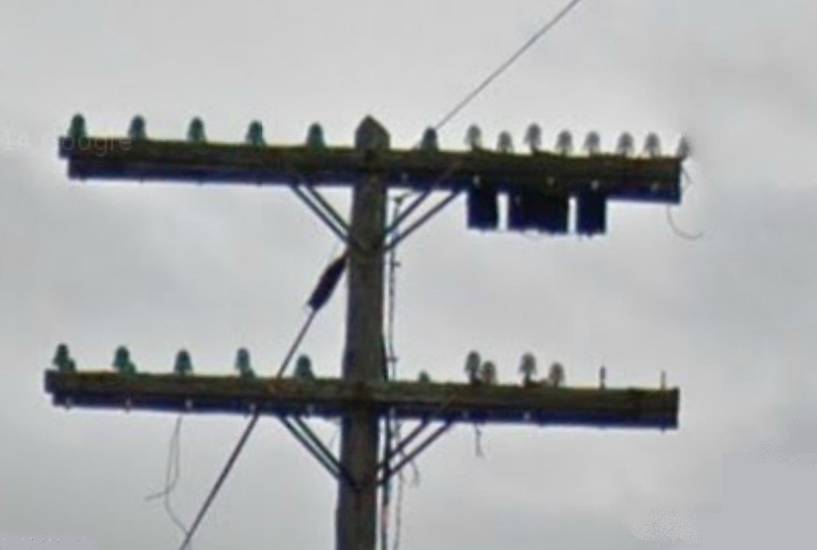Metal crossarm boxes
By Bob MacHann; posted January 15, 2015
View Original: Click to zoom, then click to magnify (1182 x 796) 113KB

|
Was there a technical term for the metal boxes hung on the upper crossarm in this photo? I have heard of junction boxes on telephone lines, but the pole pictured was a railroad communications pole along the former Southern Pacific in Eagle Lake, Texas. These photos are screen grabs from Google Street View, so the clarity isn't the greatest. This pole was one of eight taken down this past autumn. The insulators (which I did not get) were mostly CD 152, CD 154, and CD 155 Hemingrays. There were a few beehives that looked to be B or H.G.Co. Notice that the insulators immediately above the boxes are CD 155s. I wonder if this was an upgrade related to the boxes. Jim Watson wrote: Well, I'm not very smart but I'll try. It's not a dead end arm, so it's not the main feed arm. I would say that you would nico press a bridle wire to the line wire pair & terminate it in the metal box. You would then run a drop up to the terminal box to feed below, possibly a phone. I would think a communication line cuz the wires look like the just kept on going on their way to other poles. If it was a main feed terminal, it would have double arms (double buck arms) & the feed would start with dead ends, not insulators. Gee, I'm guessing they're metal terminals. Bart Magoffin wrote: The metal boxes you picture, mounted on a crossarm, were likely filter or terminal units used as part of a "high frequency" multi-channel carrier system applied to open wire. Telephone companies most commonly utilized such systems, however railroads installed them on their lines as well. By the late 30's and early 40's, up to twelve individual voice circuits could be multiplexed on a single open wire pair. One reason the filters (metal boxes) were mounted on the crossarm, rather than on the pole, or even inside an adjacent building, was to keep the jumper, or "bridle" wire leads between the open wire and the "electronics" as short as possible. At higher signal frequencies, physical connections and cable designs are tightly controlled to prevent crosstalk and noise, the length of these inter-connections proved to be a source of trouble. Also, if these units happen to have lightning arresters, they need to be as close to the open wire as possible to protect the cabling, filters and end equipment. So that's the long, drawn-out answer as to what these "boxes" might be, here is a picture I posted many years ago of such a line in Nevada [id=164682326] And more recently, New Mexico [id=409363526] |